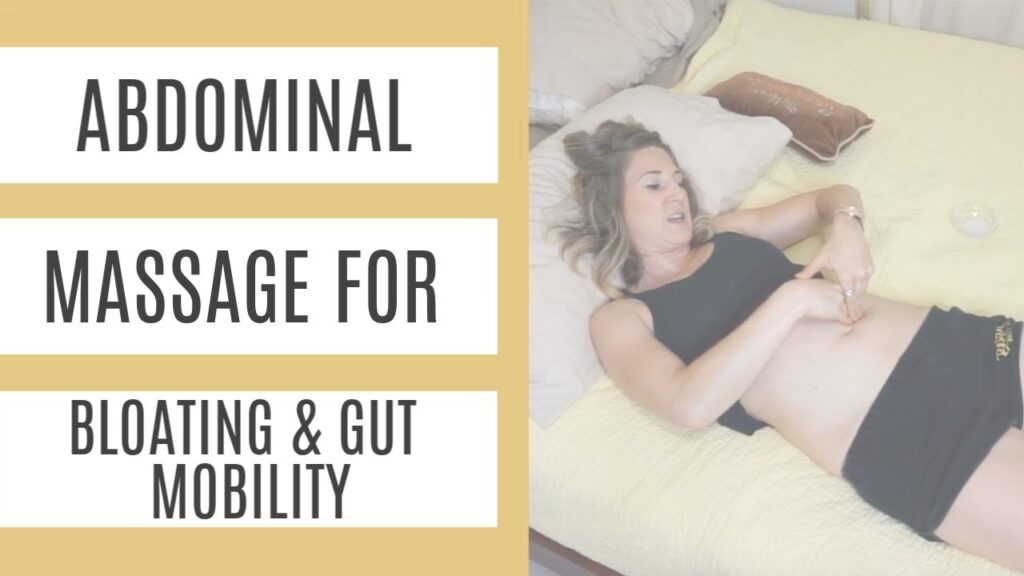Welcome to our blog! We’re here to share our knowledge and passion for massages with fellow enthusiasts like yourself. Whether you’re a seasoned massage therapist or simply someone who loves giving and receiving massages, we’ve got you covered.
Now, let’s talk about a common issue many of us experience – a bloated stomach. If you’ve ever felt uncomfortable or gassy after a big meal, you know how frustrating it can be. In our upcoming article, we’ll dive into the topic of where to massage for a bloated stomach, exploring techniques and pressure points that can provide relief. So, stay tuned and get ready to learn some helpful tips and tricks to ease that bloating discomfort! Massage therapy can provide relief for a variety of ailments, including a bloated stomach. Bloating is a common condition that many people experience at some point in their lives. It is characterized by a feeling of fullness or tightness in the abdomen, often accompanied by excessive gas and discomfort. While there can be several causes of bloating, including food intolerance, gas and air, and constipation, massage can be an effective and natural way to alleviate this uncomfortable condition.
One of the benefits of massage for a bloated stomach is improved digestion. By gently massaging the abdominal area, you can stimulate the digestive organs and promote better digestion. This can help reduce bloating and discomfort caused by indigestion or a sluggish digestive system.
Massage also provides relief from gas and bloating. By applying gentle pressure and kneading the abdomen, you can help the body release trapped gas and alleviate the discomfort associated with bloating. This can be especially beneficial for individuals who experience excess gas production or have difficulty passing gas.
In addition to physical benefits, massage for a bloated stomach can also enhance relaxation and reduce stress. The rhythmic and soothing motions of massage can help calm the nervous system and promote a sense of deep relaxation. This can have a positive impact on the digestive system and help alleviate bloating caused by stress or anxiety.
So, where exactly should you massage for a bloated stomach? There are several key areas that can be targeted to provide relief and improve digestive function. Here are some techniques you can try:
Abdominal Massage Techniques
Start by lying down on a comfortable surface and expose your abdomen. Use your hands or fingertips to massage your abdomen in a gentle circular motion, moving clockwise. This follows the natural direction of digestion and can help stimulate the digestive organs.
Clockwise Circular Motion
Continue the circular motion, gradually moving outward from the center of your abdomen. As you massage, apply gentle pressure, but avoid pressing too hard. This technique can help relieve gas and promote the movement of food through your digestive system.
Navel Massage
Focus on the area around your navel, using your fingertips to apply gentle clockwise pressure. This technique can help stimulate the small intestine and improve digestion.
Diaphragm Point
Locate the diaphragm point, which is located just below the ribcage in the center of your abdomen. Gently apply pressure to this area using your fingertips. This can help relieve tension in the diaphragm, promote deep breathing, and aid in reducing bloating.
While massage can be an effective remedy for a bloated stomach, there are some precautions you should take. It is always advisable to consult with a healthcare provider, especially if you have underlying medical conditions or if your symptoms persist. Additionally, when massaging a bloated stomach, it is important to avoid applying deep pressure as this can exacerbate discomfort. Always listen to your body and adjust the pressure based on your comfort level.
Massage should also be avoided immediately after eating, as this can interfere with the digestion process. It is recommended to wait at least one to two hours after a meal before engaging in any massage therapy.
In addition to massage, there are other remedies you can try to relieve a bloated stomach. Dietary modifications, such as avoiding trigger foods and eating smaller, more frequent meals, can help reduce bloating. Staying hydrated by drinking plenty of water can also aid in digestion and alleviate bloating. Regular exercise, such as walking or gentle yoga, can help stimulate the digestive system and prevent constipation. Some individuals may find relief from bloating by incorporating herbal supplements, such as peppermint or ginger, into their routine.
To get the best results from stomach massage, it is important to create a relaxing environment. Practice deep breathing or meditation techniques before and during the massage to help calm the body and mind. Use slow and gentle movements, and adjust the pressure based on your comfort level. Remember to listen to your body and communicate any discomfort to your massage therapist if you are seeking professional help.
The frequency of massage for a bloated stomach may vary depending on individual preferences and the severity of symptoms. Some individuals may find relief with a once-a-week session, while others may benefit from more frequent massages. It is always best to consult with a massage therapist who can assess your specific needs and provide personalized recommendations.
In conclusion, massage can be a natural and effective way to alleviate bloating and promote better digestion. By targeting key areas of the abdomen and using gentle techniques, you can stimulate the digestive organs, release trapped gas, and promote relaxation. Experiment with different massage techniques to find what works best for you and seek professional advice if necessary. With regular practice, you can achieve relief from bloating and enjoy a healthier, more comfortable digestive system.

This image is property of i.ytimg.com.
